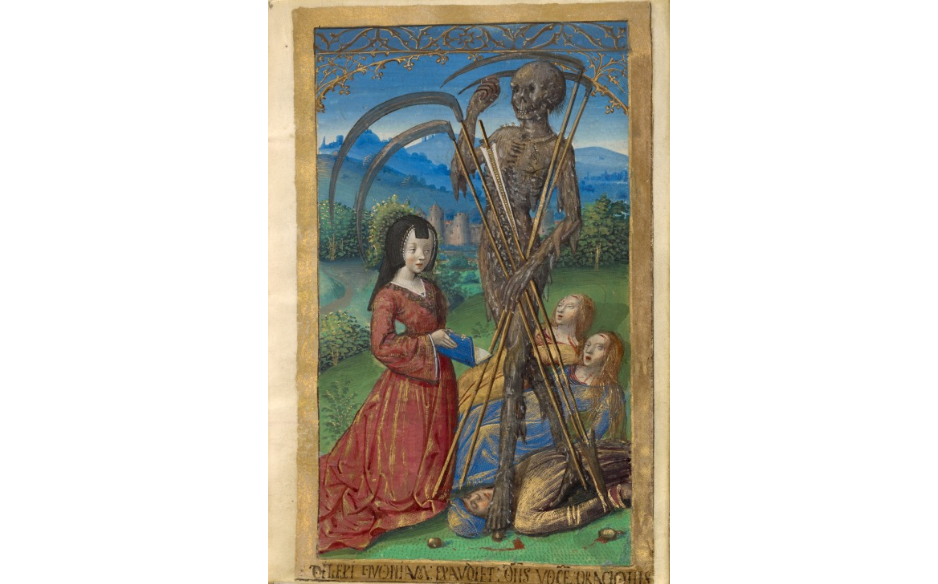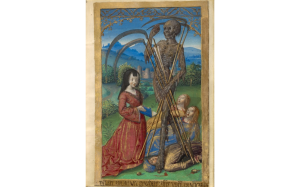Commonwealth Magazine ran a story about the J. Paul Getty Museum’s current exhibit “Heaven, Hell, and Dying Well: Images of Death in the Middle Ages,”that illustrates a number of the views Medieval Europeans had regarding the nature and experience of death. An excerpt reads:
“On the subject of death, the medieval imagination could be very resourceful. The current exhibition at the J. Paul Getty Museum succeeds admirably in proving this point.
“‘Heaven, Hell, and Dying Well: Images of Death in the Middle Ages,’ curated by Martin Schwartz, will show at the Getty Center in Los Angeles until August 12. The exhibition is small, only eighteen illuminated manuscript pages, accompanied by a variety of other objects, including examples of painting, stained glass, photographs, and three printed books from the Getty Research Institute, UCLA’s Special Collections, and the Huntington Library in San Marino. This is not enough to reveal the full range of the way medieval people imagined death, but the pieces do a remarkable job in illustrating several important themes. The show includes Biblical images such as the crucifixion and events in the Apocalypse of John, images of sinners being cast into the maw of hell, and illustrations related to Dante’s Inferno. The exhibition also offers an illustration of the parable of the rich man and Lazarus, several deathbed and burial scenes, and also a magnificent example of the popular legend of “the three living and the three dead” illustrated around 1480 in Bruges.”
Read the whole piece: https://www.commonwealmagazine.org/art-dying.


